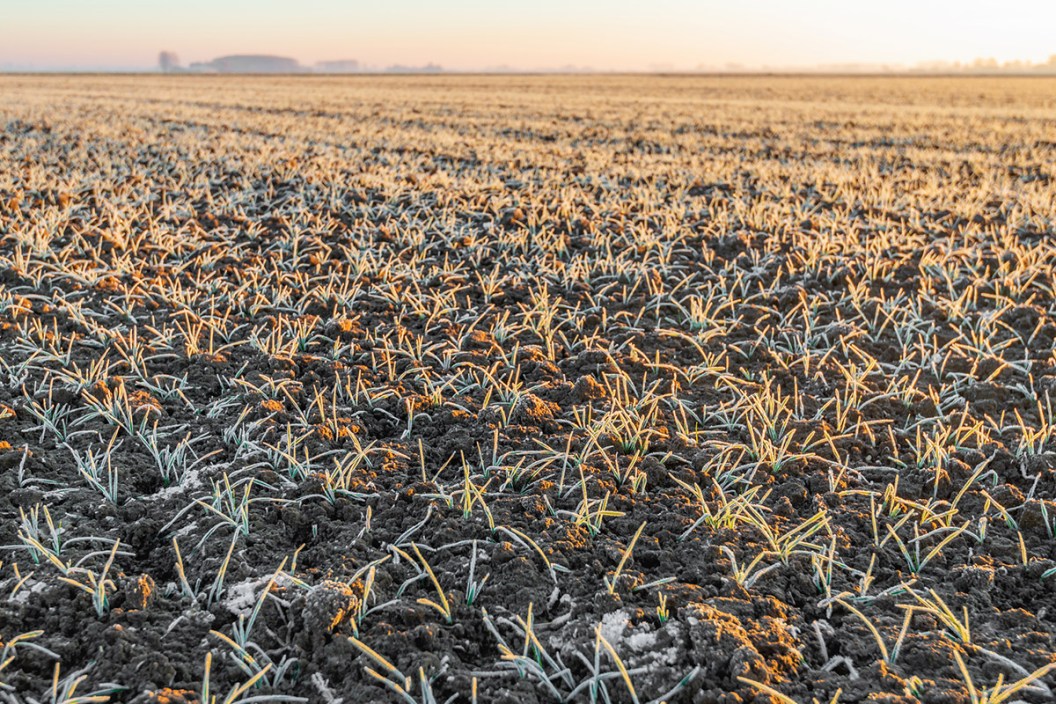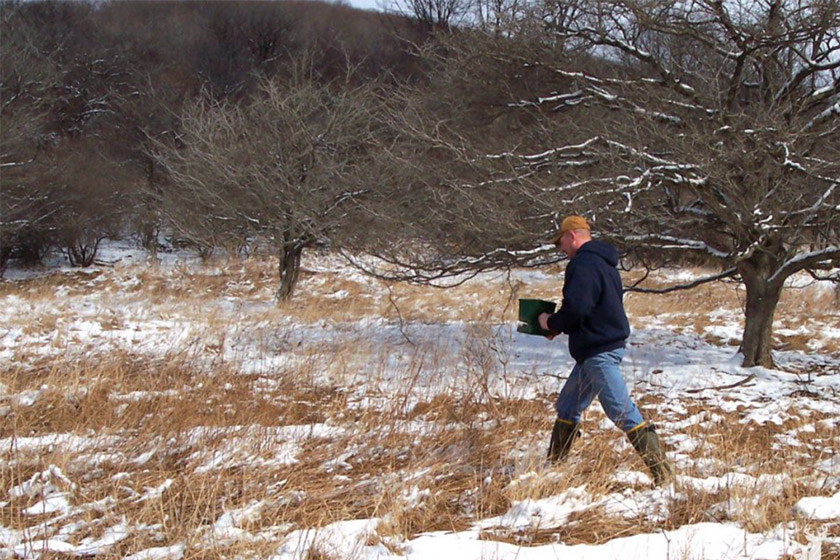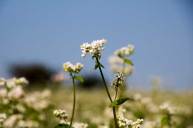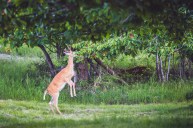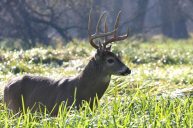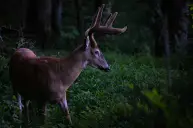If you're someone who has experimented with food plots on your hunting properties, you know just how effective they can be. About 10 years ago, I started to put a heavy focus on strategically placing food plots, and pouring in hours and hours of research on how to best utilize them, and the truth is, the rabbit hole that will take you down can be somewhat overwhelming. However, once you take that leap, you'll notice some pretty incredible results during the season.
On the other side of that coin, if you have ever experimented with food plots, you know just how fragile they can be when even a single step is missed, possibly even a step that is out of your control. From soil pH, to nutrient levels, to overgrazing, lack of rain, the list of things that can ruin all of your hard food plot efforts is seemingly limitless. It wasn't until only a few years ago that I stumbled upon a frost seeding article that changed my food plot strategy forever, and for the better.
What is Frost Seeding?
Frost seeding is an incredible way to build upon a thinning or older food plot. The basic idea is that by spreading a spring seed in the late winter, the constant freezing and thawing of the ground will allow the seed to work itself into the ground, creating great contact and leading to a better germination rate.
When done correctly and at the right time, frost seeding can add a significant amount of forage to your food plot, allowing growing bucks, young fawns and nursing does the nutrients and protein they need for such a crucial time. Whether you're trying to improve an old, patchy food plot, or reestablishing a plot that just wouldn't come up in the fall, frost seeding is a great method that produces results, at least for me, year after year.
When to Frost Seed?

Getty: eyjafjallajokull
Now that we got the basics out of the way, it's time to focus on one of the most crucial factors that will lead to your frost seeding success: when to do it. The window for frost seeding isn't very big, and it can vary dramatically depending on where you are located. You want to ensure that you're still getting freezing temperatures, however, you need to find that sweet spot where the ground heats up during the day. This can be tricky, and honestly, pretty unpredictable regardless of how well you think you have it dialed in.
A good rule of thumb is to seed during the last two or three weeks of freezing temperatures. This will give you a little bit of wiggle room from a massive mercury drop that could stunt and kill the growth of the newly planted forage, while still giving you plenty of space for freezing mornings. The truth is, it's unlikely that you'll ever time it perfectly, I know I haven't. The key is to find that conservative window and pray that nature takes it easy on you. A couple of brutally cold days won't destroy all of your efforts, so as long as you stick to this timeline, you should expect some solid growth.
What to Plant?
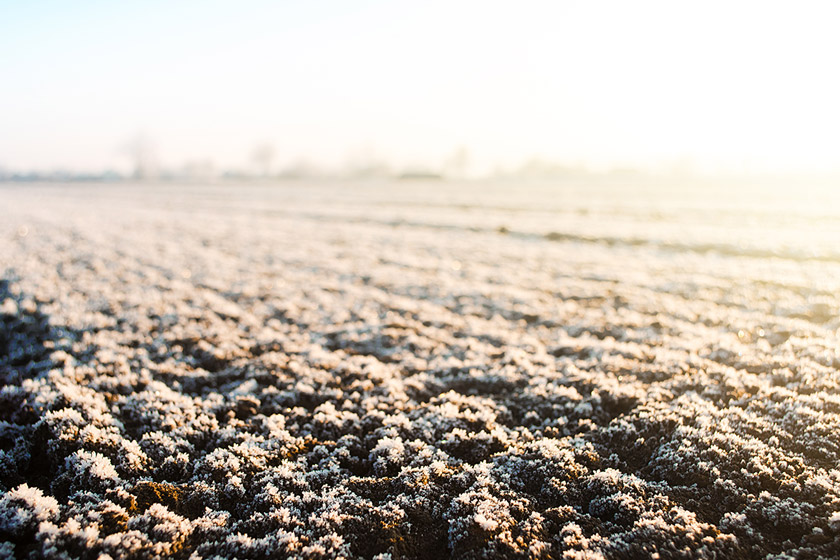
Getty: Andrii Yalanskyi
Knowing what to plant is nearly just as important as knowing when to plant. All seeds are not created equal, and most seeds won't germinate as easily as others when using the frost seeding method. You also need to bear in mind that this food plot will be targeted for spring, so you'll want to frost seed a spring forage that deer prefer and will keep them coming back long into the summer months.
In my opinion, clover is the king of frost seeding. Its high germination rates, paired with its extreme durability and willingness to withstand colder days and high grazing pressure, puts it at the top of my list for my food plot selections. Clover seeds are extremely small, so their ability to work themselves into the cracks of the thawed ground give it excellent soil contact, leading to higher germination rates.
Chicory is another option that I always like to add to my frost seeding. Chicory produces a large leaf that is irresistible to whitetails, it also holds more water, which is something deer will be seeking out during those late spring and summer days when the mercury is on the rise. Alfalfa can be frost seeded as well, however, it seems to be more temperamental, and you likely won't get the yield you are looking for when frost seeding. But nonetheless, it won't hurt to add it into the mix.
Additional Tips
We've covered what frost seeding is, how to time it correctly, and what type of seed you should be putting into the ground. You're well on your way to creating a lush and beneficial spring food source that your deer will love, and will create some excellent hunting opportunities come fall. I'll end with some additional tips that I like to keep in mind when frost seeding, in hopes that it will help you create an incredible plot.
Low Ground Residue: Frost seeding will be much more successful if ground residue is cleaned up. You want to make sure your seed has good contact with the cracking soil, and that can be difficult if there are piles of dead grass and leaves on top. In smaller plots, I typically will just rake the residue away. In larger plots, a controlled burn can be a good option when taking the proper safety precautions. Just remember that it could delay your progress.
Seed Rate: You can go on the lighter side when frost seeding, as your goal is just to fill in some of the bare patches of your plot. But don't be too conservative. On average, only 60-70 percent of seeds will germinate using this method. A good rule of thumb is 8-10 pounds per acre for clover and chicory. For alfalfa, I stick to 5 pounds or less per acre.
Soil Sample: If you don't have fertile soil, regardless of what methods you use, you likely won't get the desired results. It's best to send a sample off to your local coop to determine what nutrients you may be lacking. If you're crunched for time, I wouldn't hesitate to still broadcast the seed, however, play it safe this summer and get your soil tested!
Good luck!
